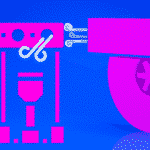10 Practical Tips to Handle Engine Room Pumps
Almost every major machinery and operations on board ships are supported by pumps. In fact none of the main machinery such as main engine or boiler can run without the help of pumps. From supplying fuel to the engine to discharging cargo to the ports, every single procedure is backed by a certain type of pump.
If you are an engineer working on ships, understanding pumps is inevitable to carry out your duties on board ships. Knowing common problems in pumps and their symptoms is extremely important for maritime professionals who want shipping operations to be smooth and safe in the engine room.
Mentioned below are 10 practical tips which would help engineers to understand pumps on board ships and troubleshoot problems related to them.
1. Temperature – While taking engine room rounds, check the motor temperature (by thermal gun or by feeling the motor by hand). Any abnormality or increase in temperature indicates problem in the pump- motor assembly.
2. Current – Monitor the pump motor amperage regularly. Any variation or abnormal change in the current indicates some kind of problem in the pumps.
3. Vibration – Continuous monitoring of pump vibrations is also very important. Any sudden or gradual increase in the vibrations indicates one or all of these – loose foundation, loose coupling, misalignment, shaft-bearing wear out etc.
4. Sound – Regular monitoring of the pump’s sound helps seafarers to recognize the normal working sound of the pump and also helps to understand a problem from any change in the usual sound.
5. Pressure – The main function of the pumps is to supply/transfer liquids or semi-liquids with pressure. Ensure that the rated pressure is maintained at all times. If the pressure reduces, check the pump and operations of associated parts (filters, valves etc.).
6. Running Hours: Every mechanical part comes with limited running hours. Once the running hour of the pump part is over, it need to be renewed. Keep a proper note of the running hours of pump parts and change them whenever required without fail.
7. Planned Maintenance: The Planned Maintenance System (PMS) of the pump is to be followed and overhauling of the pumps is to be carried out at regular intervals of time as stated.
8. Gland Packing and Seals: Ensure that the gland packing and mechanical seals of the pumps are in proper condition. Any leakage in them is to be attended immediately for ensuring proper operations.
9. Motor/ Prime Mover Condition: A pump is driven by either an electric motor or a prime mover engine. Ensure that the prime mover engine is in proper working condition or the motor winding and its insulation etc. are in good condition at all times.
10. Correct Operating Procedure: There are several different types of pumps in the ship’s engine room which require specific operating approach. Ensure you know the correct operating sequence for different types of pumps. Check out The Ultimate Guide to Operating Procedures for Engine Room Machinery for more information.
Do you know any other important point that must be considered while handling engine room pumps? Let us know in the comments below.
Do you have info to share with us ? Suggest a correction
Latest Marine Technology Articles You Would Like:
- 10 Harmful Effects Of Impure Air On Ship’s Machinery
- 10 Important Things to Check While Starting Fuel Oil Purifier on Ships
- 10 Noteworthy LNG-Powered Vessels
- 10 Points for Efficient Turbocharger Operation On Ships
- 10 Practical Tips to Handle Engine Room Pumps
- 10 Precautions to Take Before Operating Controllable Pitch Propeller (CPP) on Ships
Subscribe To Our Newsletters
By subscribing, you agree to our Privacy Policy and may receive occasional deal communications; you can unsubscribe anytime.
Web Stories






















